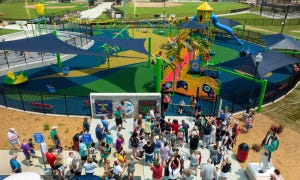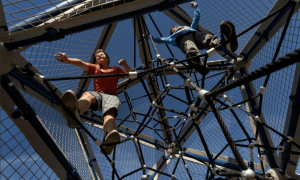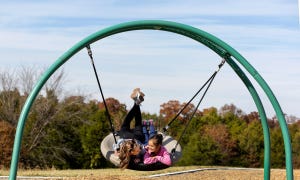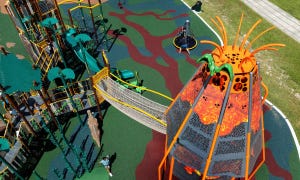Community sports fields encourage families to be more active outdoors. They also contribute to the local economy and provide health and wellness benefits for a significant population. Athletic field design requires careful planning, from little league baseball and recreational soccer fields to competitive softball and tennis complexes.
If you’re considering an outdoor athletic space, here are six essential tips for designing the perfect sports complex.
1. Choose High-Quality Sports Surfaces
Regardless of the sports you intend to support with your athletic complex, one of your first investments will be appropriate surfaces. From synthetic field turf to poured recycled rubber, the quality of your surfacing materials makes a difference.
 Work with an experienced contractor to understand the regulations associated with your activities. Choose suitable surfacing options for your specific needs. If your goal is to support field sports, some teams may prefer natural turf, but it requires more frequent maintenance than synthetic turf options.
Work with an experienced contractor to understand the regulations associated with your activities. Choose suitable surfacing options for your specific needs. If your goal is to support field sports, some teams may prefer natural turf, but it requires more frequent maintenance than synthetic turf options.
2. Consider Graphics and Logo Placement
Choosing synthetic turf and surfacing options gives you the added benefit of customization. You can personalize your sports fields with city seals or team logos. The ability to customize your playing fields is an attractive option for sponsors and donors.
3. Design for Your Climate
Designing a sports complex in northern Michigan requires a different plan than an athletic field in Southern Nevada. The two climates are different, and it’s essential to have a design that works with your specific weather conditions.
Low country areas like the deep south and coastal regions require specialized drainage systems to prevent pooling water and muddy conditions. Dry, arid areas are better suited for artificial turf than natural field grass.
Landscaping adds beauty and comfort to your complex. Depending on where you install your sports fields, you’ll want to consider which plants and trees will thrive in a landscaping plan.
4. Provide Bleachers and Spectator Seating
Community sports complexes across the country attract millions of young athletes each year, but that number is overshadowed by the tens of millions of spectators who attend those same events. When designing a sports field or athletic center, add seating areas for visitors. Well-considered spectator seating and bleachers make it more enjoyable for people to enjoy the games.
If your sports fields are in a warm climate with direct sun, adding shade structures can help keep spectators cooler and more comfortable.
5. Plan Vendor Space for Additional Revenue
One of the ways to generate community support for a new sports complex is by creating opportunities for vendors. Whether you staff a concession stand with volunteers or allow outside vendors to sell souvenirs or promotional gear, vendor space generates revenue for you and the vendors.
Plan for this space in the early stages of your design, and consider how you can expand the area if necessary. It can be challenging to provide this opportunity if you initially don’t plan for it.
6. Budget for Sports Equipment and Maintenance
Any athletic complex requires essential sports equipment like scoreboards, nets, goal posts, or backstops. Ensure your budget includes funds to buy all the equipment you need and for replacement parts and maintenance. Athletic events and sports activities take a toll, and you’ll need to maintain your equipment throughout the seasons.
Some communities seek corporate sponsors to fund their maintenance needs. Others enlist the help of volunteer groups to perform routine maintenance.
Make an Impact in the Community
Sports fields and athletic complexes can generate revenue, attract more people to your parks, and provide health and wellness benefits for people of all ages. If you’re planning a new sports area for your community, it’s essential to work with an experienced team that can provide equipment, guidance, and support. To learn more, contact a GameTime recreation specialist in your area.
- Trails (27)
- Schools (193)
- Press Releases (109)
- Playground Funding (5)
- Play Science & Research (62)
- Parks & Recreation (363)
- Outdoor Fitness (138)
- National Demonstration Site (32)
- Landscape Architects (79)
- Inclusive Play (109)
- Daycare and Early Learning (62)
- Custom Play (38)
- College Campus (28)
- Churches (51)
- Challenge Course (30)
- Featured Projects (77)
- BluePrint for Play (18)
- Site and Shade (9)





